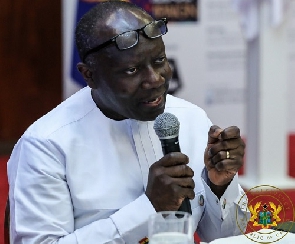 Finance Minister, Ken Ofori-Atta
Finance Minister, Ken Ofori-Atta
Government has indicated that it will continue to build benchmark securities through tap-ins, rather than excessive new issuances to further deepen the country’s domestic debt market,
In a statement responding to a reportage by Bloomberg, the strategy according to government, forms part of efforts to re-profile the country’s domestic debt portfolio.
According to the Central Securities Depository (CSD) monthly bulletin, as at the end of July 2019, government made a total of GHc 9,152 million from reopening of existing securities, whereas new securities issued for the period was about GHc 24,508 million.
However, the monthly bulletin as at the end of December, 2018 shows that there wasn’t any re-opening of existing securities. New securities issued for 2018 amounted to about GHc 41,923 million.
The Finance Ministry noted that consistent with the 2019 Annual Borrowing Plan and 2019 Medium Term Debt Strategy, government will continue to issue longer-dated bonds beyond 10 years to extend the yield curve further.
Government intends to also re-profile the domestic debt portfolio by reducing the percentage of shorter-dated instruments of 91 and 182-day bills, which dominates the country’s bond market and increasing rollover risks.
As such, the Ministry successfully issued the highest tenor bond, 20-year bond, on the domestic market, with a target of GHc450 million, of which GHc 161.13 million. Prior to this, the longest dated bonds on the domestic market was the 15-year bond.
20-Year Bond Explained
According to the Ministry, based on the article by Bloomberg, Rwanda, which has inflation of 1.6 percent and a credit rating of B+, issued their 20-year bond at 13.25 percent, implying a real return of 11.65 percent (13.25 percent, minus 1.60 percent). Ghana on the other hand, with an inflation rate of 9.4 percent and credit rating of B, issued its 20-year bond at 20.2 percent meaning a real rate of 10.8 percent.
Thus, Ghana’s real rate of 10.8 percent was much lower than Rwanda’s at 11.65 percent despite its higher credit rating.
Meaning Ghana was able to obtain financing at a cheaper rate despite their lower credit rating, Ministry noted in the statement. An indication that Ghana’s issuance was much better priced, which explained the lower participation.
“Ghana’s issuance of a 20-year bond is in line with its debt strategy not to borrow at any cost.”